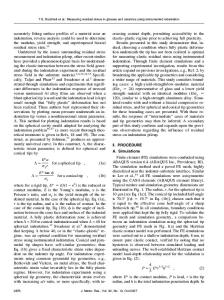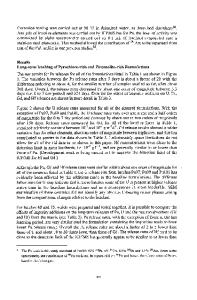Plutonium in Crystalline Ceramics and Glasses
- PDF / 6,440,479 Bytes
- 9 Pages / 612 x 792 pts (letter) Page_size
- 115 Downloads / 394 Views
Plutonium in
Crystalline Ceramics and Glasses
Isabelle Muller and William J. Weber This article is a short qualitative summary of a chapter in the forthcoming book Advances in Plutonium Chemistry: 1967–2000, edited by Darleane Hoffman for the Amarillo National Research Center. The authors’ intent here is to give an overview of the history and science of plutonium in ceramics and glasses, and they refer readers to the chapter for more technical details.
Introduction The investigation of plutonium in glasses (amorphous ceramics lacking long-range order), in crystalline ceramics, and in composite materials composed of multiple crystalline or glass and crystalline phases, relies on multidisciplinary studies of physics, chemistry, and materials science. It involves the study of the plutonium atoms in materials with only short-range periodicity, as in glasses, to materials with long-range periodicity, as in crystals. The materials studied over the past 30 years include simple binary crystals, used to investigate the electronic structure of plutonium, to complex glasses and ceramics selected not only for the safety and durability that they provide for the immobilization of nuclear waste and plutonium, but also for the high flexibility they offer in composition. The lack of long-range order at the atomic level in glasses permits the inclusion of a broad range of waste elements, but it renders more difficult the interpretation of data from many commonly used experimental techniques. Regardless of the challenge, much of the research conducted in this field over the past few decades has been motivated by the use of plutonium as a surrogate for all nuclear-waste actinides or on its own in immobilization studies, in order to develop a durable glass or ceramic matrix that can resist leaching and mobilization of the plutonium on a geologic time scale. 698
The need for stability over a very long period, relative to the half-life of 239Pu or other long-lived actinides in high-level waste (HLW) is the essential driver of many compositional studies involving structural refinement, such as determining plutonium site valences and coordination, measuring the stability of the matrix under the effect of irradiation, and assessing its alterability under conditions expected in a geologic repository for waste disposal. This article will present a review of the glass and ceramic systems in which plutonium can be dissolved and the flexibility of these materials in retaining various grades of plutonium, which often cannot be purified without great expense and difficulty. Since glass-matrix and ceramic materials often differ in their composition and technique of preparation, they are presented in separate and parallel sections, as is done in the book chapter being summarized. The current international effort associated with the immobilization of excess weapons plutonium and plutonium residues within the nuclear-weapons complexes has resulted in pilot-scale and industrial facilities for plutonium immobilization located around the world. These
Data Loading...











